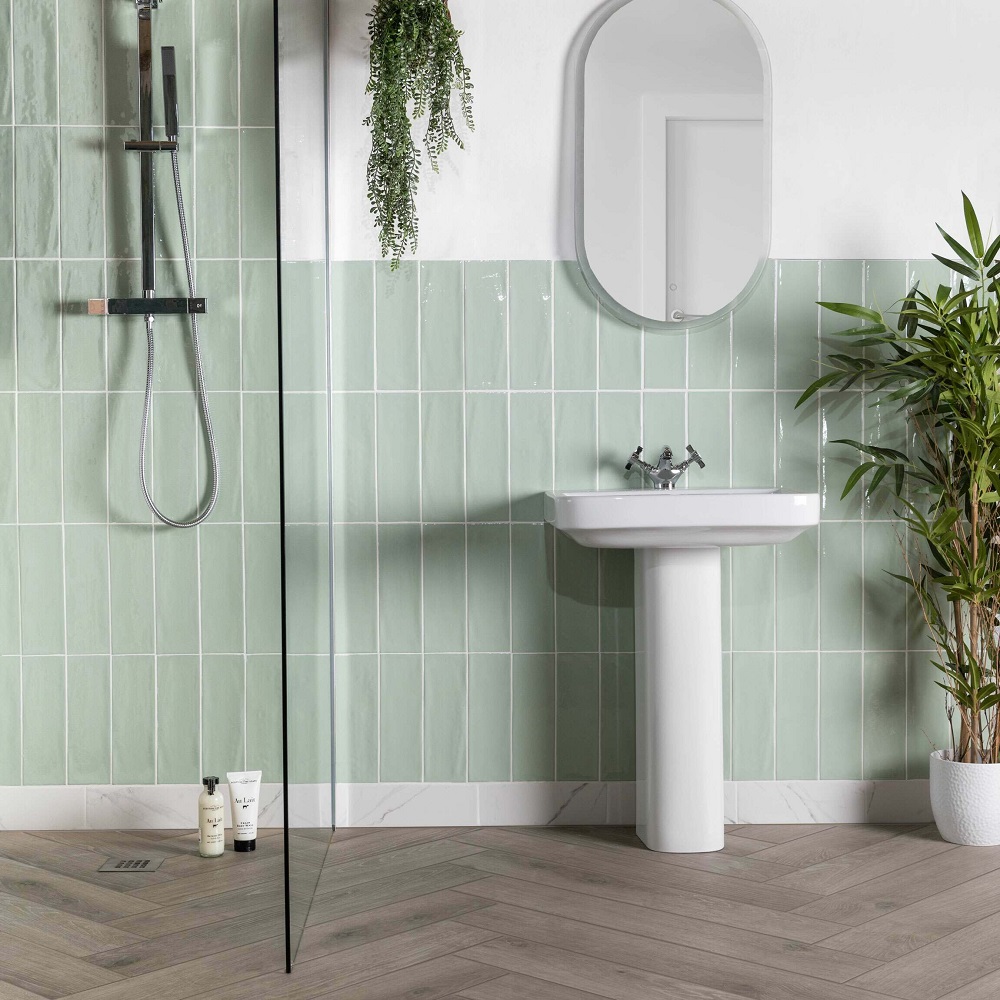A DIY Guide To Using A Silicone Sealant To Finish A Tiling Job
Walls and Floors have paired up with the tiling experts at BAL to bring you a selection of How To Tile videos! In this segment, our professional tiler shows you how to seal a kitchen or bathroom after tiling, using silicone sealant and an applicator gun.
Choosing the right silicone sealant
In any tiling installation, there will always be a use for a silicone sealant. This can be used around a bath or around a sink, in the joints between the tiles on the walls, or in our tiler’s case in the video, between the tiles on the wall and the worktop. This will provide a nice seal and will prevent any water from getting in behind and through to the back of the worktop.
Make sure you choose a sealant that is both suitable for the tiles and the area that is to be sealed. The expert staff at Walls and Floors can advise you on this. BAL have a range of sealants available in a range of colour tones. Many of these sealants also have world-leading microban anti-bacterial protection in-built into the formulation, insuring the microban will not wash off or wear away. Microban technology provides effective protection against the growth of harmful bacteria – such as E. coli, salmonella, listeria, and effective protection against the growth of unsightly black mould.
Preparing and applying the sealant
Before you start to silicone, you need to make sure you’ve got your safety wear on. Put goggles on to protect your eyes, and gloves to protect your hands. Now you’re ready to apply the silicone.
To apply the silicone, but the cartridge into the sealant gun. Cut the cap off the screwcap on the cartridge, and screw on the nozzle. Cut the tip of the nozzle off at such a point that it will allow the right amount of silicone to be pushed through. Approximately 5mm from the tip of the nozzle should suffice. Cut at a 45 degree angle to aid with the application.
Apply the silicone by gently squeezing the trigger of the sealant gun, in position, and dragging the gun backwards so that the sealant is spread smoothly. Try to apply a consistent amount of silicone as your drag the gun backwards, but any slight differences can be made good afterwards. Where possible, work from one corner to another.
How to seal: Working around obstructions
Where there are obstructions, such as where you are sealing the base of a wall on a worktop, and the sink taps obstruct you midway, simply drag back along the wall as far as possible, behind the obstruction, before stopping and working from the opposing side, back towards the obstruction, where you should hopefully be able to reach the silicone already applied.
Finishing the job
Once the silicone has been applied, you need to smooth the silicone. To do this, put a small amount of washing up liquid and cold water into a bottle with a spray top, and spray along the silicone. Then, wet your finger to drag along the silicone at a 45-degree angle. This will smooth the silicone and remove any excess.
Always carefully remove, with a cloth, any excess that has gotten onto a tile or a work surface. Remember – the silicone will tend to dry quite quickly, in approximately 5-10 minutes, so only work to areas you can complete in this time frame.

Other useful tiling guides
Now we’ve shown you how to seal after your kitchen or bathroom after a tiling job, maybe we can help you with something else…
If you’re tiling a wall, check out: HOW TO TILE A WALL
Alternatively, if it’s a floor space you’re going to be tiling, try: HOW TO TILE A FLOOR
Be sure to tag us in pictures of your DIY projects on Instagram, @Wallsandfloors, we love seeing what you’ve been up to!





